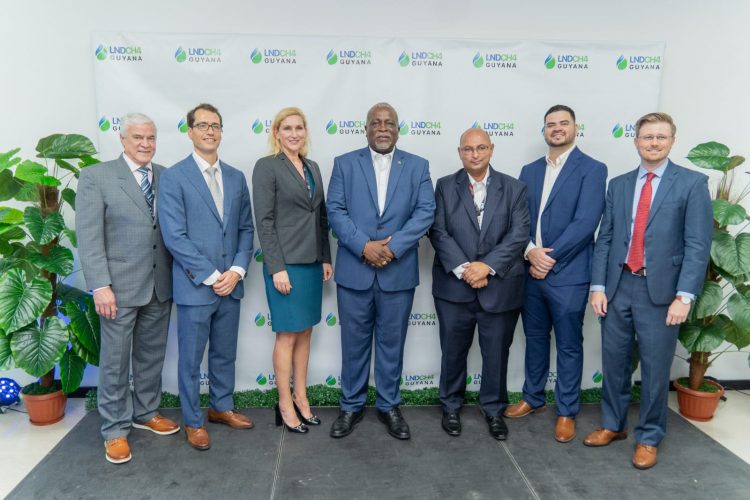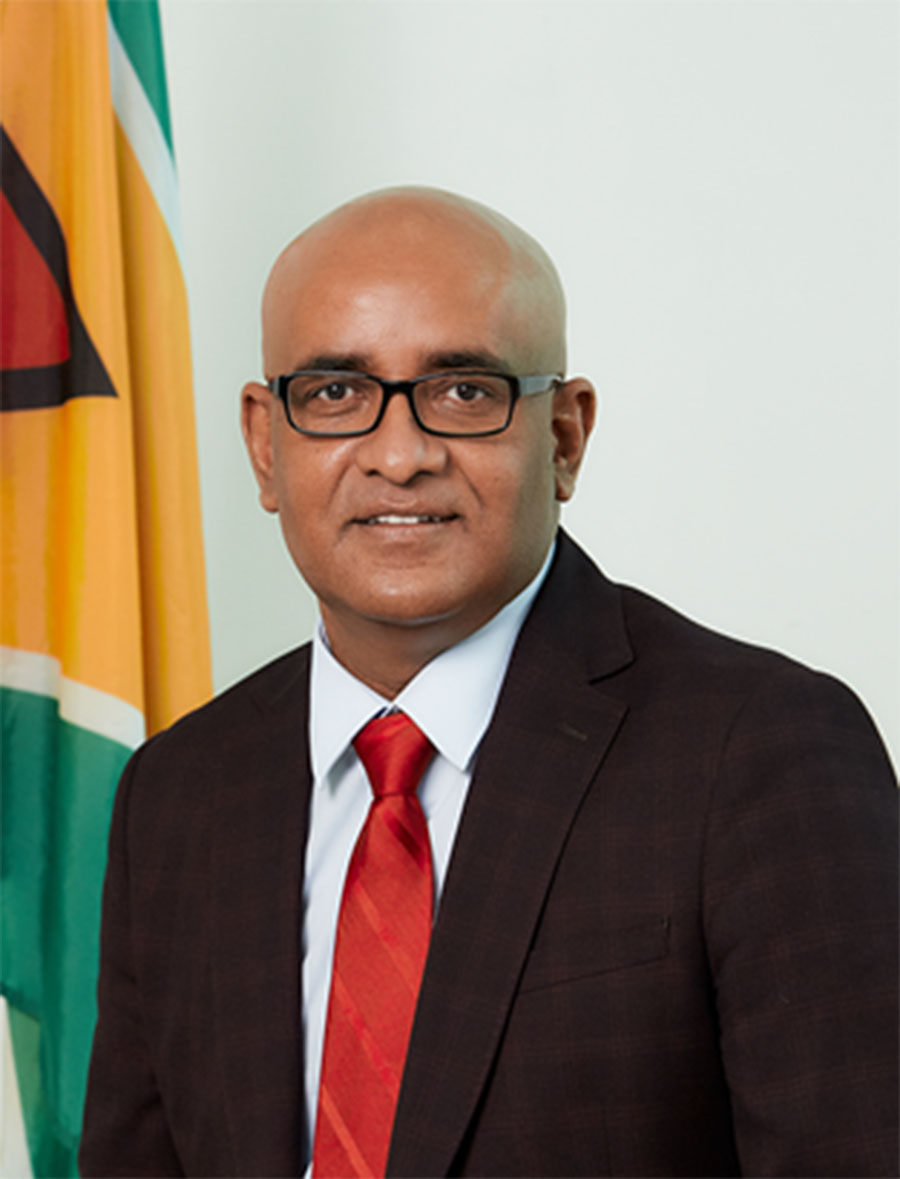Gas-to-energy contractor, CH4-Lindsayca, has moved to a Dispute Adjudication Board as it is locked in a stalemate with the Government of Guyana over the sum of US$50 million the company feels it is owed because the Wales, West Bank Demerara project site was delivered to it three months late, Vice President Bharrat Jagdeo on Thursday said.
Disputing a Reuters report which stated that the contractors for the project have taken government to arbitration for US$90 million for cost overruns, Jagdeo said that monies are US$50 million and that government was advised, following a review by its supervisory project consultant, Engineers India Limited (EIL), that the claims lacked merit.
“It is US$50 million, not US$90 million…” Jagdeo clarified with Stabroek News last Thursday evening, after assuring at a press conference he hosted at Freedom House, Georgetown, that he would.

“The contractor now has made a claim for additional money. They are saying it is costing them. So our independent engineering supervisory firm… has reviewed the claim and rejected it totally to say it doesn’t have merit. We have legal opinion to say they have no merit on the financial claim. When you are faced with that situation as with any contract, you would now have to go to a dispute resolve mechanism. The matter is likely to be determined by a three-person dispute adjudication board being set up. When they determine if either party is not satisfied they can now ask for arbitration,” he explained.
This dispute over US$50m and delays to parts of the project underline the high stakes in play for the government in what will be the largest ever public sector project in the country’s history and one that is coming with the promise of a cut in power rates by 50%.
Although this means that only one aspect of the project will be delayed, and it will not interfere with the overall end of 2025 project schedule, it was the first time the PPP/C government acknowledged that it is at loggerheads with the project site contractor and that an arbitration hearing was pending. This was first reported by Reuters on April 8th.
“Why did this happen? As I said, [government] was responsible for the site preparation; the road, the materials offloading facility (MOF), and the laydown yard. We were supposed to hand over the site to the contractor by June, [but] we did not hand over the site; that is, Exxon did not hand over the site, until September, and it was still incomplete. And they handed over an additional US$14 million, from the US$1 billion that they set aside, to the contractor, to complete the site. So, [we have] a three months delay. Who was the contractor that Exxon had? It was GYSBI [Guyana Shore Base Inc] to prepare this site. So, we had a three months delay by GYSBI and Exxon to hand over the site to the contractor,” the Vice President said.
“We have now decided that we will give them an extension of three months. That is from the end of 2024, an additional three months. That is why we are arguing the plant must be completed by end of March, 2025 instead of end of March 2024. GAICO was to do the MOF hand over by July to Exxon, to the contractor. This was done until September [and] they still had some issues with that. That is where we are arguing; we had some three months delay with the project. They [Lindsayca CH4] want a longer period, because the liquidated damages for not completing the project on time for the contractor, if they don’t complete the project on time, it is over US$11 million per month. They have to pay liquidated damages for delays on the project. So they are arguing that they need more time, beyond the three months. We are saying, ‘three months is adequate for you because that is the delay that we’ve had’” he added.
Jagdeo was quick to explain that the process “is only to bring the 228 megawatts on board” as “the 300 megawatts with the steam turbine is still on track for 2025.”
Flagship
Giving an outline and update on the party’s flagship project, he said that US$1 billion was set aside for the pipeline but that included the upgrade of the roads to get to the site.
“It included the material offloading facility; it included a site preparation facility for 100 acres and a laydown yard… this was all managed by Exxon. The second component was the power plant itself and the NGL [natural gas liquids] facility. We went to tender and Lindsayca won for US$759 million. Now what were the components of this? In this case the timeline was that by end 2024. Listen carefully! end 2024, as per contract, Lindsayca and the others were supposed to deliver 228 megawatts of power, four turbines were to come on stream at the end of 2024 of 57 megawatts each,” he explained.
“To complete the project in the agreement where the full 300 megawatts would come online, they had, that is the combined cycle, that is the two additional turbines, and these were the steam turbines. So four gas turbines were supposed to come on stream end 2024, and the steam turbines should have come on stream end 2025. So, the completed project as per contract is end-2025. That is the completed project. The end of the project has not shifted. What we have is a delay for the turbines; the four simple-cycle turbines and the delay we believe is three months, taking it to end March, April (2025), and the contractor wants to complete the gas turbines by August but the total timeline has not shifted,” Jagdeo added.
In February of this year, after rebuffing public qualms about the timeline, Project Lead, Winston Brassington, had announced that the project would be delayed by months but that its completion would still be the end of next year. The timeline deferral, according to Brassington, was due to a number of factors including supply chain impediments and works delays. He did not cite the arbitration dispute.
Three components
The Gas-to-Energy (GtE) project is divided into three components – Pipeline, Power/NGL Plant, and Transmission Line/Substations. The Pipeline component includes a 250-kilometre 12-inch pipeline from two Floating Production, Storage and Offloading platforms (FPSOs), to deliver some 50 MCF/D (1,000 cubic feet per day) of gas to shore, although the pipeline has the capacity for 120-plus MCF/D.
The Power/NGL Plant component is the 300 MW Combined Cycle and NGL Facility, while Component 3 will have Transmission Line/Substations of 85 kilometres of 230 & 69 KV transmission lines, 3 new substations, and upgrades to 2 other sub-stations.
“These three projects [components]… given the overall complexity of it and the level of interfaces, our delivery period of the first half of 2025 is reasonable and we believe we will achieve this and we will be on time and the project to be on time for the combined cycle by the end of next year,” Brassington had said during a presentation on the project at the conference.
ExxonMobil has stated that the laying of the pipelines will be completed by the end of this year and the pipes will be filled with nitrogen until government’s completion of the integrated plant.
“We will not start-up bringing gas onshore until the plant is ready. The plant has a safety system that allows you to start up properly. We have to wait until the plant is ready. In the meantime, we will do what is called ‘inserting the pipe’, which is preserving the pipeline. You preserve a pipe by putting a gas that is inert that doesn’t combine with anything, doesn’t corrode with anything, et cetera,” GTE Project Manager Friedrich Krispin had told Stabroek News during an interview last month.
“So nitrogen will be inside the pipe. We fill it up with nitrogen and then we wait and whenever the plant is ready, we will release all of the nitrogen, which doesn’t cost anything, to the atmosphere, then we start bringing in gas,” he added.
Meanwhile, Jagdeo on Thursday said he was shocked that persons did not expect that there would be a pausing of oil production to facilitate the gas pipeline setup to the FPSOs.
He said that while there are reports claiming it would be a long process and this country would lose money, “our estimate is two weeks each to connect the pipeline to supply” and there would be no revenue losses with deferred production.
“This is not a new variable…” he said, while noting that government had already taken deferred production into its 2024 oil revenue forecast.
When it took office in 2020, the PPP/C promised to deliver the GtE project by 2024 and said it will not only lower consumer tariffs by some 50 per cent, but that it will also replace the current Heavy Fuel Oils that this country currently uses, with cleaner fuel. Currently, the power utility, Guyana Power and Light, provides electricity at a rate of 15 US cents per kilowatt/hour. Government last April sought a US$660 million loan from the United States EXIM Bank for the project and is still awaiting approval of that sum, which it believes is delayed because of US legislative policies. However, it is still optimistic the funds will be approved and is in the meantime using state funds as it waits.






